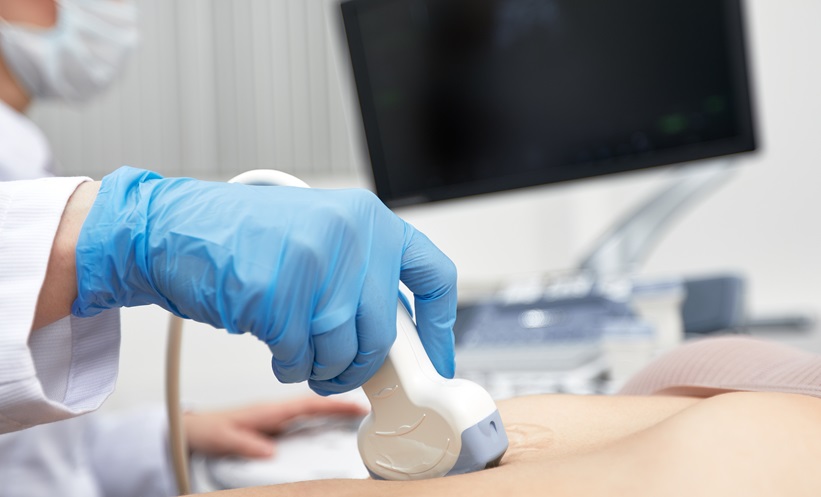Author: Bertie Pearcey, EMJ, London, UK
Citation: EMJ Hepatol. 2025;13[1]:32-36. https://doi.org/10.33590/emjhepatol/YEJK4634
![]()
AT THIS year’s European Association for the Study of the Liver (EASL) Congress 2025, held in Amsterdam, the Netherlands, a thrilling, expert-lead session chaired by Isabelle Colle, ASZ Aalst, Belgium, and Catherine Williamson, Imperial College London, UK, entitled, ‘Pregnancy and liver disease: a double-edged sword’, explored the clinical challenges and management approaches to liver-related complications in pregnancy, providing both practical insights and recent research developments.
DIAGNOSTIC CHALLENGES IN PREGNANCY-RELATED LIVER CONDITIONS
The session began with Rebecca Painter, Erasmus Medical Centre, Rotterdam, the Netherlands, delivering a talk entitled, ‘The diagnostic conundrum: acute fatty liver of pregnancy vs HELLP syndrome’. Painter began by stating that, as an obstetrician, she is aware that she “knows less about the liver than the audience”, setting a collaborative tone. She outlined the scenarios in which obstetricians typically seek input from hepatologists, specifically when liver disease is pre-existing or newly suspected, or in cases of liver failure. In contrast, she mentioned that they do not routinely consult hepatologists in cases of preeclampsia or Haemolysis, Elevated Liver enzymes, and Low Platelet count (HELLP) syndrome.
Painter defined preeclampsia and detailed the diagnostic criteria, including elevated blood pressure, proteinuria, and associated clinical or biochemical features such as low platelets, elevated creatinine, raised transaminases, pulmonary oedema, neurological symptoms, and fetal growth restriction.
She went on to explain that acute fatty liver of pregnancy (AFLP), though rare, presents a significant diagnostic challenge due to overlapping symptoms with HELLP. AFLP is diagnosed using the Swansea Criteria, which requires the presence of six or more specific findings, including coagulopathy, elevated bilirubin and transaminases, leukocytosis, and abdominal pain, among others. Painter noted the nuanced interpretation of certain markers; for example, leukocytosis alone is common in pregnancy, but can be a red flag when liver function is severely impaired.
Data was presented summarising the incidence of obstetric syndromes: preeclampsia affects approximately 3–5% of pregnancies, or slightly more in high-risk clinics, while HELLP is seen in 1–2% of pregnancies. In comparison, AFLP remains extremely rare, affecting around 1 in 20,000 pregnancies.
Painter then discussed the evolving understanding of pathogenesis, pointing to endothelial dysfunction as a central feature in preeclampsia. This dysfunction is linked to an imbalance of angiogenic factors, such as soluble fms-like tyrosine kinase and placental growth factor, which affect the blood vessels of the liver. AFLP, by contrast, appears to be rooted in mitochondrial dysfunction, although this is likely not the only cause.
To illustrate diagnostic complexities, Painter presented two anonymised cases. The first involved a woman at 26 weeks gestation with early-onset HELLP. Although she presented with raised blood pressure, mild thrombocytopenia, transaminase elevation, and fetal growth restriction, her liver function remained intact. HELLP was diagnosed, and the patient was managed without hepatology input. Delivery proceeded, but the neonate did not survive due to severe prematurity and growth restriction.
The second case featured a twin pregnancy where one fetus showed growth restriction. The patient presented with malaise, polydipsia, polyuria, and mild laboratory abnormalities. The day after admission, jaundice and raised ammonia levels developed alongside altered mental status, and AFLP was diagnosed. As a result, the babies were delivered urgently. Painter then recalled how maternal encephalopathy was highlighted in this case by the patient’s inability to recall the names of her mother’s dogs, which was a clinical clue that prompted urgent hepatology input.
Painter concluded by stressing that AFLP is a rare but severe condition with a high rate of complications, including liver failure, renal dysfunction, and even death; thus, it must be considered in any pregnant patient with liver dysfunction. Importantly, she underlined that those with HELLP do not present with liver failure.
Therefore, recognising this distinction and acting promptly is imperative to providing appropriate care.
THE IMPACT OF PREGNANCY ON AUTOIMMUNE LIVER DISEASES
Ulrich Beuers, Tytgat Institute for Liver and Intestinal Research, AGEM, Amsterdam University Medical Center, the Netherlands, was the recipient of an EASL recognition award at this year’s congress. He followed Painter with a talk entitled, ‘The effect of pregnancy on immune-related liver diseases’. This covered autoimmune hepatitis (AIH), primary biliary cholangitis (PBC), and primary sclerosing cholangitis (PSC). To start things off, Beuers acknowledged the rarity of these conditions, which are typically diagnosed in fewer than 50 per 100,000 individuals.
Summarising the incidence of AIH, he noted that it affects around 15–25 per 100,000 people, occurring at any age. He explained that fertility is usually preserved and pregnancy is possible with careful planning, emphasising that pre-conception counselling focused on disease stability and medication safety is essential. He stressed that mycophenolate mofetil should be avoided, while azathioprine and prednisolone can be continued if already tolerated. However, medications should not be unnecessarily tapered prior to conception.
Diagnosis during pregnancy mirrors standard criteria, using autoantibody titres, IgG levels, liver histology, and viral markers. Beuers showed how scores from these categories can support a diagnosis of probable or definite AIH. He also noted that AIH often coexists with features of cholestatic liver diseases, such as PBC or PSC.
PBC often affects around 40 per 100,000 people. These are typically women beyond childbearing age, although approximately 25% of diagnoses occur in younger women. While discussing the necessary pre-conception counselling considerations, Beuers reported that up to 50% of patients experience worsening or de novo pruritus during pregnancy, likely due to hormonal changes. Preterm births occur more commonly, and live birth rates may be reduced, but he optimistically stated: “it will probably change when we are more consistent at treating our pregnant women.” Furthermore, he mentioned that postnatal liver serum test deterioration is common, but medication can be adapted post-pregnancy to combat this, if lactation is assessed. Ursodeoxycholic acid remains the treatment of choice during pregnancy and lactation, but other agents such as rifampicin and bile acid resins may be used to manage pruritus, while obeticholic acid is not recommended.
PSC, the rarest of the three conditions Beuers discussed, is usually diagnosed at childbearing age, and similarly shows increased pruritus in up to half of pregnant patients. Liver function generally remains stable with ursodeoxycholic acid therapy, though postnatal deterioration of serum liver tests is reported in around 30% of cases. As with PBC, monitoring bile acids is important, as higher serum bile acids are associated with reduced gestation length in pre-existing cholestatic liver diseases due to toxicity.
Overall, Beuers emphasised that pregnancy is stable in AIH, PBC, and PSC, but prepartum counselling and multidisciplinary surveillance are crucial; outcomes can be improved through continued therapy and close monitoring.
MANAGING PORTAL HYPERTENSION DURING PREGNANCY
The session continued with Melanie Nana, King’s College London, UK, who focused on ‘Pre-conception counselling and management of portal hypertension in pregnancy’. She began by describing the surge in incidence of cirrhosis among women of childbearing age: a sevenfold increase from 2.0 per 100,000 in 2000, to 14.9 per 100,000 in 2016, with 71% of cases caused by non-alcoholic fatty liver disease.
Nana then presented data from her own research published in March 2025, where the incidence was 2.5 per 100,000 women of childbearing age. After remarking that the aetiology reflects that of older studies, she continued: “Our concern is that we are 10 years behind the curve, and we will eventually be seeing more women with this underlying aetiology in the future.”
She emphasised that pre-conception counselling plays a pivotal role in ensuring maternal and fetal health. Disease control prior to conception improves outcomes, and medication review is critical to avoid drug toxicity. She referenced data showing that 76% of women felt pre-conception counselling helped them make informed decisions about pregnancy, and that the main worries for those considering pregnancy included deterioration of maternal health and loss of pregnancy. Additionally, for some women, particularly those with decompensated cirrhosis, pregnancy may be contraindicated, requiring a discussion about contraception options.
Maternal risks associated with cirrhosis in pregnancy include cholestasis, puerperal infections, and induction of labour. Neonatal risks include preterm delivery and respiratory complications. Nana noted that, while maternal mortality remains low (0.89%), variceal haemorrhage is the leading cause of death. While presenting evidence that mortality rates are decreasing, likely due to better clinical care and multidisciplinary approaches, she remarked that “it’s very reassuring that the incidence of maternal mortality is declining over time,” and that “we probably have better care and are better equipped to take these women through pregnancy.”
Following on from the data, Nana offered some important information about the risks of variceal bleeding, which is reported in up to 33% of pregnant women with cirrhosis and up to 50% in pregnant women with portal hypertension. She stressed that endoscopic surveillance for oesophageal varices is essential, and presented guideline recommendations on the timing of such interventions. In women with cirrhosis, endoscopy should be performed within a year before pregnancy, while in others, it may be done in the second trimester. The rare but deadly risk of splenic artery aneurysm rupture was also highlighted, with Nana recommending pre-pregnancy management for any patient with a previous rupture or an aneurysm over 2 cm.
Delivery planning in women with varices is complex. While caesarean sections are not routinely recommended, assisted vaginal delivery may be considered to reduce the strain of prolonged labour. Nana noted that postpartum haemorrhage occurs in 5–45% of these patients, warranting careful haemostatic planning.
In summary, Nana explained that both mothers and neonates face an increased risk of severe complications compared to the general population, underscoring the essential nature of pre-pregnancy counselling. Her final remark echoed the previous talks, as she emphasised the need for multidisciplinary team involvement and management to achieve the gold standard of care.
BENIGN LIVER LESIONS IN PREGNANT WOMEN: DIAGNOSIS AND MANAGEMENT
The final talk, delivered by Joris Erdmann, Amsterdam University Medical Centre, the Netherlands, focused on hepatocellular adenomas (HCA) in women of childbearing age. Erdmann described HCAs as rare, benign liver lesions often driven by oestrogen and associated with obesity and metabolic disorders. While benign, they carry risks of bleeding and, in rare cases, malignant transformation.
He reviewed the histological subtypes of HCA, noting that β-catenin-activated HCAs carry the highest risk of malignancy. These require surgical resection, whereas others may be managed conservatively. Erdmann advocated for biopsy and subtyping where possible to avoid unnecessary surgery.
He continued explaining that, when planning liver surgery, it is essential to examine the anatomy, as there are places where lesion resection is considered ‘easy surgery’. These surgeries can even be completed in pregnant patients.
However, Erdmann urged caution when performing surgeries involving an extra anatomical section during pregnancy, as these carry a high risk of bile leak and other complications. He specifically highlighted hemihepatectomy, a high-risk procedure involving the removal of two-thirds of the liver.
He stated that overall surgical outcomes are good, quoting data from a study showing that mortality was zero from 2014–2019, though he noted selection bias. Interestingly, during the same period, the mortality for right hemihepatectomy indicated for colorectal liver metastasis was around 4%, and for primary liver tumours, it was around 20%.
Erdmann specified that bleeding risk in pregnancy remains a concern, especially with lesions over 5 cm. He pointed to alternative therapies, such as transarterial embolisation and ablation, as particularly useful during the second trimester when surgery can be dangerous. Studies were cited showing that bleeding is more likely in larger lesions and is rare after pregnancy, underlining the potential for conservative management if lesions remain stable.
Importantly, he stressed that HCA does not preclude pregnancy in most women. With proper imaging, multidisciplinary planning, and monitoring, many patients can achieve favourable outcomes. The key, he concluded, is to balance risk while supporting reproductive goals.
CONCLUSION
Across all four talks, a common theme emerged: successful management of liver disease in pregnancy hinges on multidisciplinary collaboration, early planning, and individualised care. While these conditions are rare, they carry substantial risk, making informed, proactive management essential. Whether dealing with autoimmune conditions, portal hypertension, or benign hepatic lesions, clinicians must engage with patients early, optimise disease control, and maintain vigilant monitoring throughout pregnancy. The talks highlighted that individualised care, grounded in current evidence and thoughtful communication, is essential to optimise outcomes for both mother and child.







